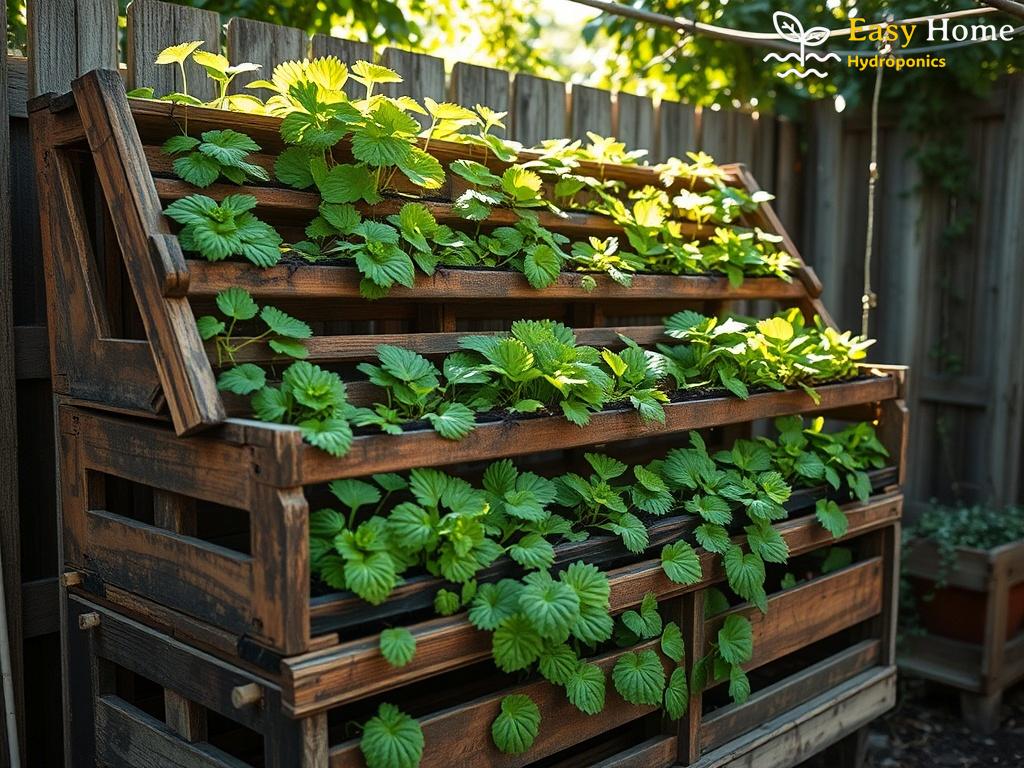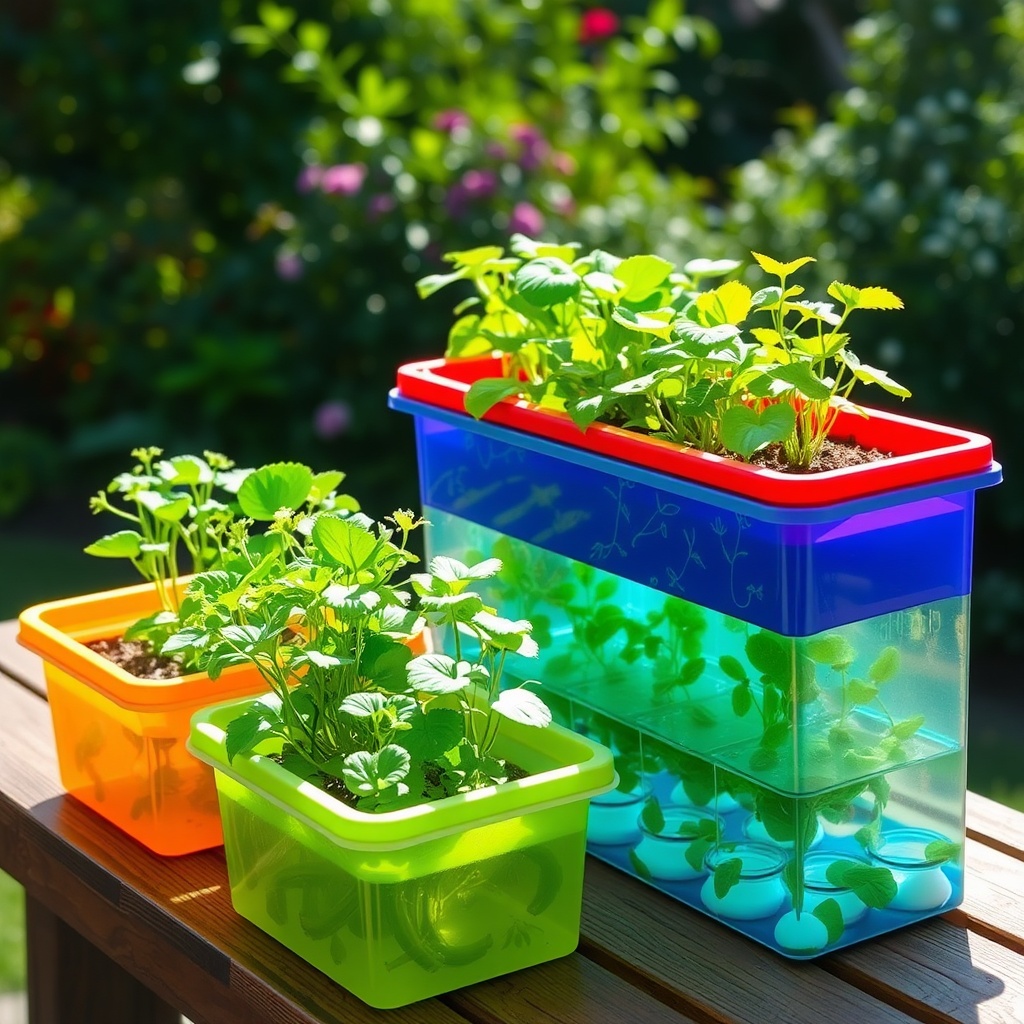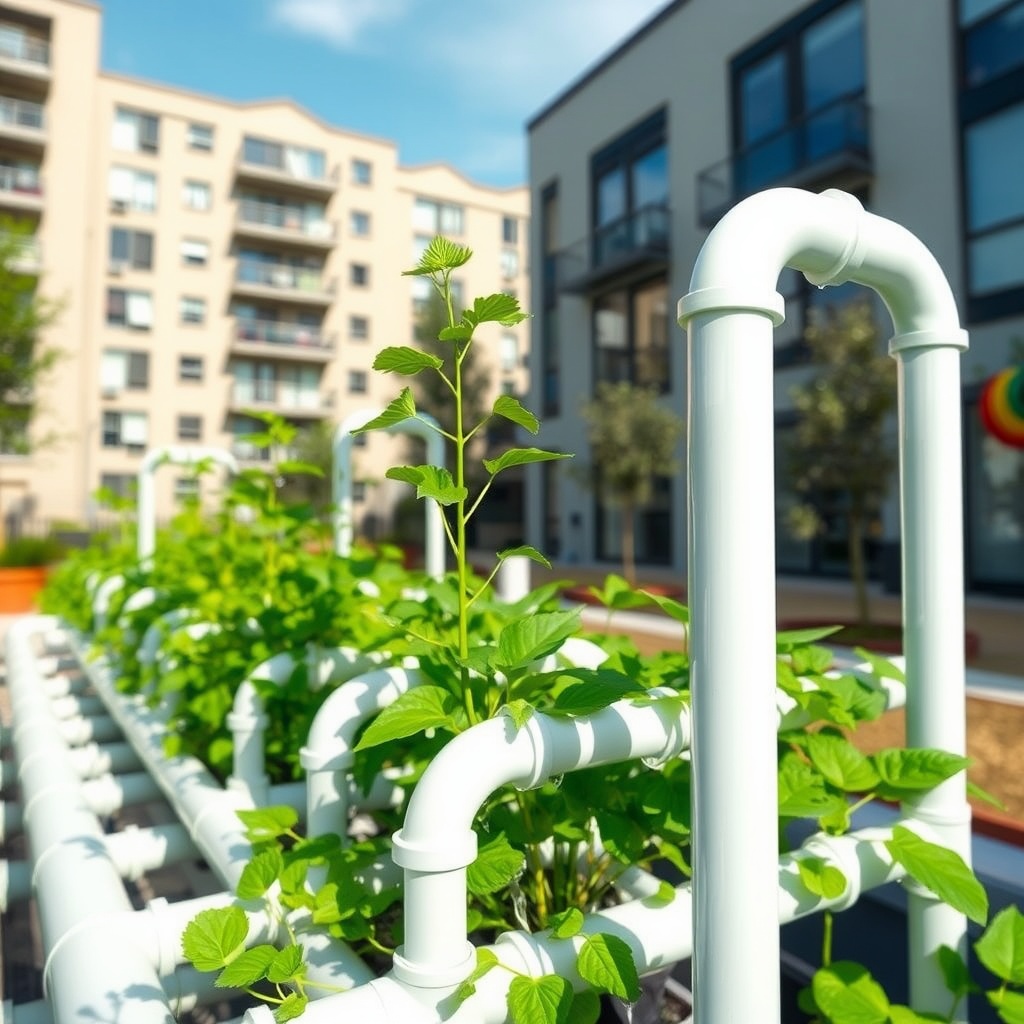Upcycling Crates: Your Hydroponic Journey Begins
Why Choose Hydroponics?
In a world where sustainability is paramount, hydroponics emerges as a revolutionary gardening technique. It allows you to grow fresh produce without soil, using nutrient-rich water instead. For those looking to make a positive environmental impact, it offers a sustainable solution to traditional gardening. But what if you could take it a step further? What if you could create your hydroponic garden using materials you already have? This is where old wooden crates come into play!
Preparing Your Crates for Hydroponic Success
Before diving into the exciting world of hydroponics, it’s essential to prepare your wooden crates properly. Not only will this ensure the longevity of your garden, but it will also optimize the growth of your plants. Here’s how to get started:
- Cleaning the Crates: Begin by thoroughly cleaning the crates to remove any dirt or contaminants that could harm your plants.
- Sealing the Wood: To protect the wood from moisture, apply a non-toxic sealant. This prevents rot and extends the life of your crates.
- Draining Holes: Drill holes in the bottom of each crate to allow excess water to escape, preventing root rot.
With your crates ready, you’re one step closer to cultivating your hydroponic garden!
Setting Up Your Hydroponic System
Now that your crates are prepared, it’s time to set up your hydroponic system. There are several methods you can choose from, making it a versatile option for your gardening needs. Below you’ll find a comparison of popular hydroponic systems you can implement in your crates:
| System Type | Description | Pros | Cons |
|---|---|---|---|
| Deep Water Culture | Plants are suspended in a nutrient-rich water solution. | Fast growth, easy to manage. | Requires constant monitoring. |
| Drip System | A drip line delivers nutrients directly to the plant roots. | Efficient use of water, customizable. | Can clog if not maintained. |
| Wick System | Uses a wick to draw nutrient solution from a reservoir to the plants. | Simple, no electricity required. | Slow growth rate. |
Choosing the right system can make all the difference in your hydroponic gardening experience. Consider your space, resources, and the plants you wish to grow before making your decision.
Essential Hydroponic Systems for Crate Gardens
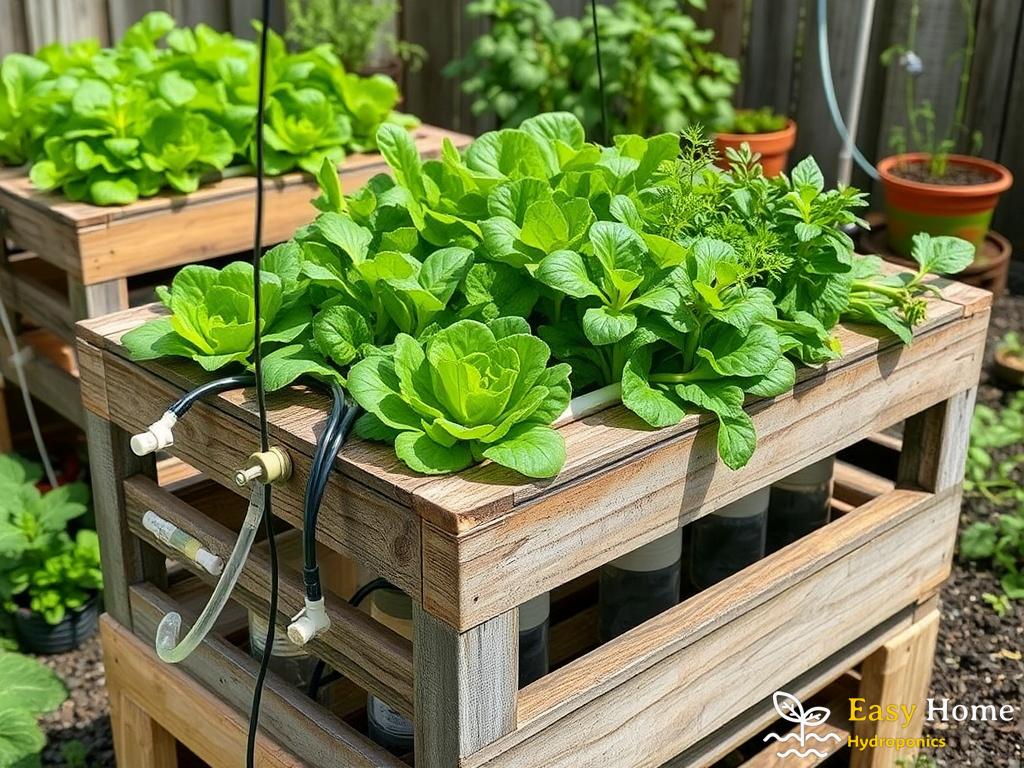
Once you’ve transformed your old wooden crates into a potential hydroponic haven, the next pivotal step is selecting the right hydroponic system. Each system comes with its own unique benefits and challenges, tailored to various gardening styles and plant needs. By understanding these systems, you can maximize your crate garden’s productivity and ensure a bountiful harvest.
Exploring Hydroponic Systems
When it comes to hydroponics, not all systems are created equal. Some are better suited for beginners, while others cater to the more experienced gardener. Here’s a closer look at popular hydroponic systems that can be effectively integrated into your wooden crate setup:
- Deep Water Culture (DWC): This system suspends plant roots in a nutrient-rich water solution, allowing for rapid growth.
- Drip System: A network of tubes delivers a steady supply of nutrients directly to the roots, making it both efficient and customizable.
- Wick System: Utilizing a wick to draw nutrient solution from a reservoir, this method is perfect for those wanting a simple, low-maintenance approach.
Each of these systems thrives in a crate garden, offering distinct advantages depending on your gardening goals and preferences.
Choosing Your Ideal Hydroponic System
To make an informed decision, consider the following factors:
- Space Availability: Assess how much room you have for your crates and the system you wish to implement.
- Plant Type: Different plants have varying nutrient requirements and growth patterns, influencing your system choice.
- Maintenance Level: Determine how much time and effort you’re willing to invest in managing your hydroponic garden.
By taking these factors into account, you can choose a hydroponic system that not only complements your wooden crates but also aligns with your gardening aspirations. The right choice ensures that your crate garden flourishes and provides you with fresh, home-grown produce.
Choosing the Right Plants for Your Crate Hydroponics
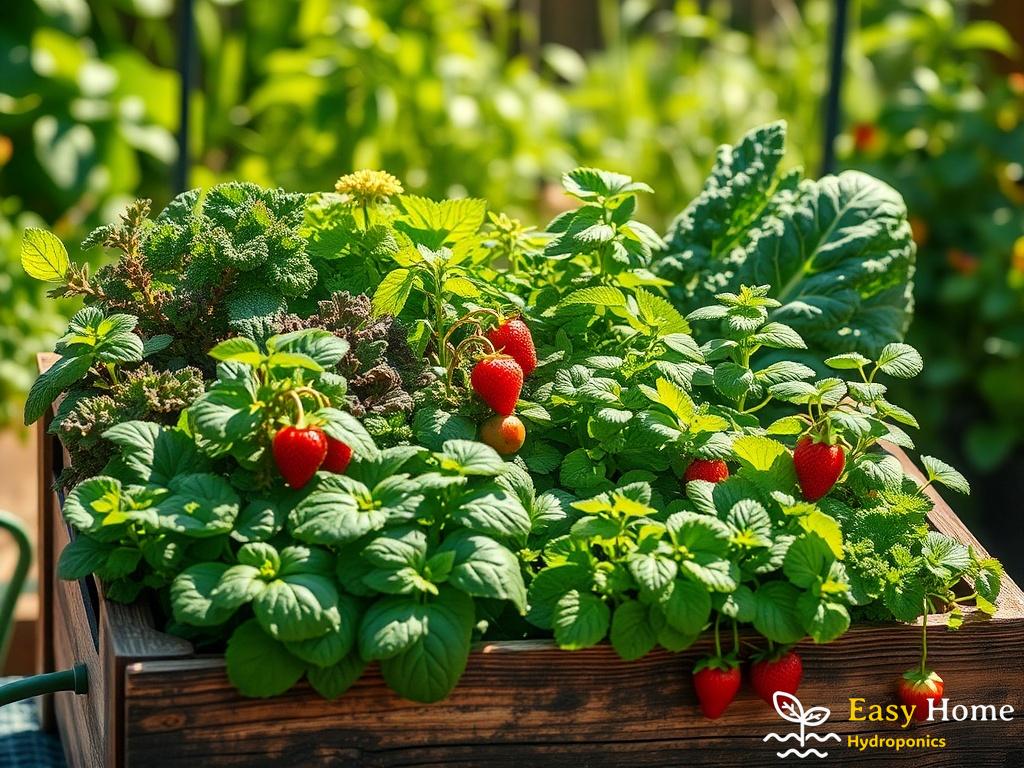
Unlocking the Potential of Your Hydroponic Crate Garden
As you embark on your hydroponic adventure, one crucial decision awaits you: selecting the right plants for your crate garden. The beauty of hydroponics lies not only in its sustainability but also in the vast array of plants you can cultivate. However, with so many options available, how do you determine which plants will thrive in your unique setup? Let’s dive into the exciting world of plant selection!
Factors to Consider for Plant Selection
When choosing plants for your hydroponic system, several factors come into play. Each plant has its own specific needs, and understanding these requirements will help you create a flourishing garden. Here are some essential considerations:
- Growth Rate: Some plants grow quickly while others may take longer to mature. If you’re looking for a swift harvest, opt for fast-growing varieties.
- Light Requirements: Assess the amount of light your setup receives. Certain plants thrive in low light, while others need abundant sunlight.
- Space Requirements: Consider how much room each plant will need in your crates. Compact plants work well in smaller spaces, while larger plants may require more room.
- Nutrient Needs: Different plants have varying nutrient requirements. Be sure to choose plants that align with your hydroponic nutrient solution.
Top Plant Picks for Your Crate Hydroponics
To help you get started, we’ve compiled a list of some of the best plant candidates for your hydroponic crate garden. These selections are renowned for their adaptability and success in hydroponic systems:
| Plant | Growth Rate | Light Requirement | Space |
|---|---|---|---|
| Basil | Fast | Moderate | Compact |
| Lettuce | Fast | Low | Compact |
| Strawberries | Moderate | High | Medium |
| Tomatoes | Moderate | High | Large |
| Spinach | Fast | Moderate | Compact |
Each of these plants offers unique flavors and nutritional benefits, ensuring your hydroponic garden not only looks beautiful but also provides delicious, fresh produce. By choosing wisely, you can create a vibrant and productive garden that thrives in your upcycled wooden crates!
Maintenance Tips for Thriving Hydroponic Gardens
Maintaining Optimal Nutrient Levels
Once your hydroponic garden is up and running, the key to ensuring its long-term success lies in regular maintenance. One of the most critical aspects of this is monitoring and maintaining the nutrient levels in your water solution. Plants in a hydroponic setup rely solely on the nutrients dissolved in the water, making it paramount to check nutrient concentrations frequently. Using a reliable pH and EC meter, you can evaluate the nutrient solution’s balance. Aim for a pH range of 5.5 to 6.5, as plants absorb nutrients most efficiently within this window. Over time, you may need to adjust the nutrient solution based on the growth stage of your plants — remember, what nourishes a seedling might not suffice for a fruit-bearing plant. This attention to detail can mean the difference between a thriving garden and one that struggles to flourish.
Water Quality: The Lifeblood of Your Garden
Water quality plays an equally vital role in the health of your hydroponic system. Regularly refreshing your water is essential to prevent the buildup of harmful pathogens that can jeopardize your plants. Ideally, replace your nutrient solution every two weeks to keep it fresh and balanced. Additionally, consider using filtered or distilled water to minimize contaminants. Remember, the clarity of your water isn’t just aesthetic; it directly impacts the well-being of your plants. When you notice any discoloration or floating debris, it’s time to change your water. This simple yet effective practice can drastically enhance the growth potential of your hydroponic garden.
Regular Monitoring and Pest Management
Even in a soil-free environment, pests can still pose a threat to your hydroponic garden. Implementing a preventative pest management strategy is crucial for maintaining a healthy ecosystem. Regularly inspect your plants for any signs of infestation, such as discoloration or unusual webbing. Early detection allows for prompt action, whether through organic pesticides or introducing beneficial insects that can combat pests naturally. Furthermore, maintaining proper air circulation and humidity levels can help deter unwanted visitors. By being proactive and vigilant, you can protect the integrity of your hydroponic oasis and enjoy bountiful harvests for seasons to come.
Harvesting Success: Enjoying the Fruits of Your Labor
Reaping the Rewards of Your Hydroponic Efforts
After all the hard work and dedication you’ve put into your hydroponic garden, the moment has finally arrived: it’s time to enjoy the fruits of your labor! Harvesting from your upcycled wooden crates is not only a fulfilling experience but also a celebration of your commitment to sustainable gardening. The vibrant colors and fresh aromas of your home-grown produce are a testament to the thriving ecosystem you’ve nurtured. As you prepare for this rewarding phase, understanding the best practices for harvesting ensures that you maximize both flavor and yield.
The Art of Harvesting: Techniques to Enhance Flavor
Harvesting isn’t just about pulling ripe fruits or vegetables from your plants; it’s an art that requires timing and technique to enhance the flavor and longevity of your crops. For leafy greens such as spinach and lettuce, the best approach is to use the cut-and-come-again method. This involves cutting the outer leaves while allowing the inner leaves to continue growing. This method not only extends the harvest period but also promotes a fresh and tender taste that is hard to beat. For fruit-bearing plants like tomatoes and strawberries, timing is crucial. Harvest them at their peak ripeness for the best flavor, and be gentle to avoid bruising. The careful handling of your produce will ensure that the taste remains as delightful as the effort you put into growing them.
Sharing Your Hydroponic Bounty: From Garden to Table
Once you’ve harvested your produce, the next step is to enjoy and share your bounty! Incorporating your fresh ingredients into meals not only enhances flavors but also fosters a deeper appreciation for the food you’ve cultivated. Consider hosting a small gathering with friends and family to showcase your hydroponic creations. You can prepare dishes that highlight the freshness of your greens, such as vibrant salads or flavorful salsas, where the ingredients shine in their natural state. Sharing your harvest not only spreads joy but also inspires others to embark on their own hydroponic journey, creating a ripple effect of sustainability and healthy living. As you savor the taste of your labor, remember that every bite is a celebration of your dedication to a greener future.

